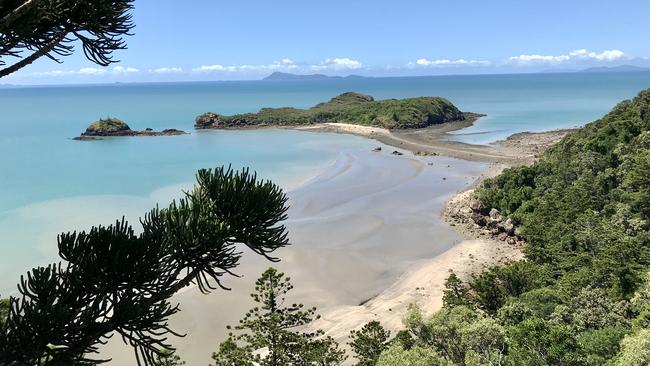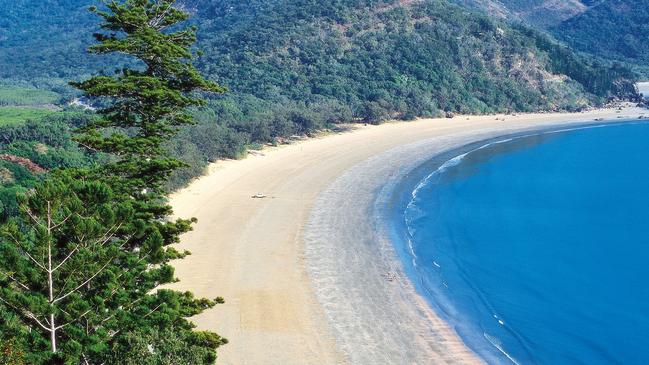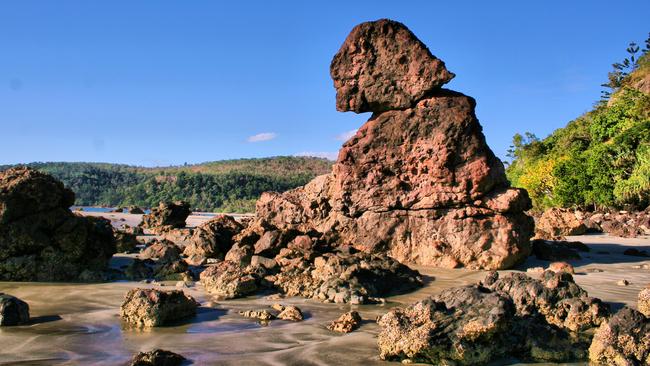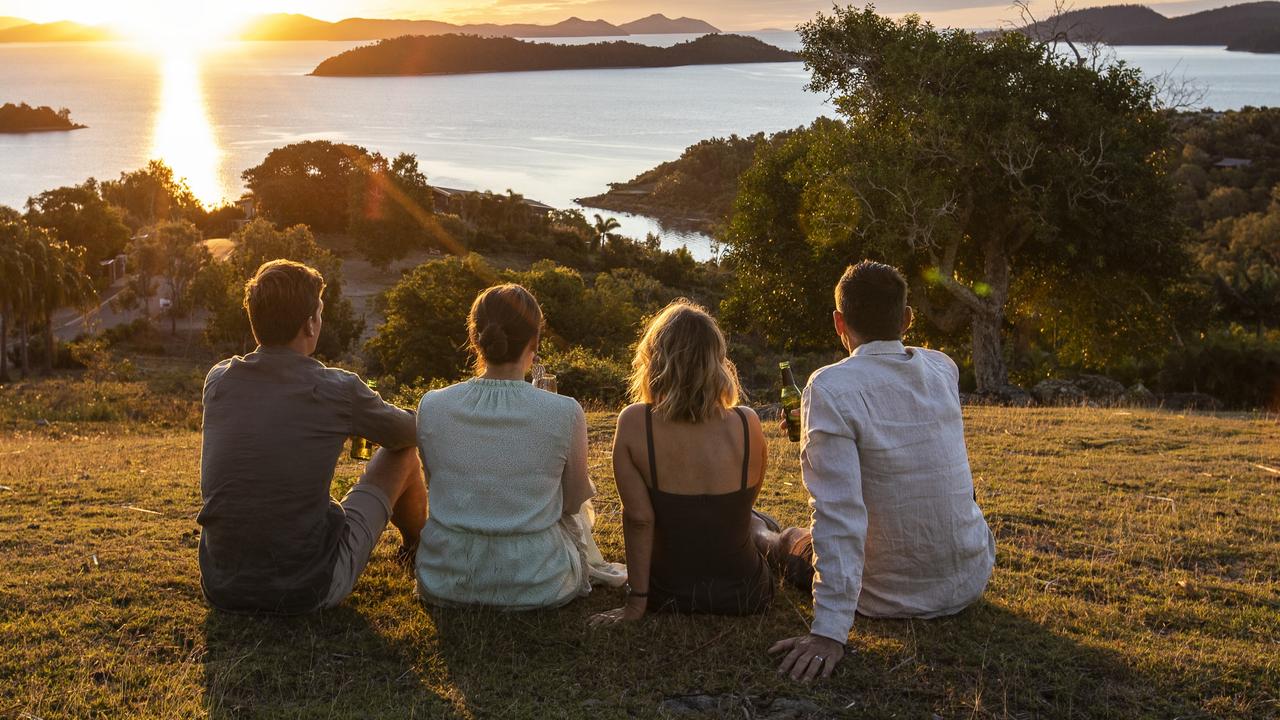Remnants of ancient volcano creates Cape Hillsborough natural wonder
Lava ranging from black to sticky and purple erupted millions of years ago creating a colourful landscape with clues left behind for you to discover. Here’s how.
Mackay
Don't miss out on the headlines from Mackay. Followed categories will be added to My News.
A picturesque destination best known for its beachside wallabies is actually made from lava erupting about 34 million years ago.
Mackay region’s Cape Hillsborough National Park is the remnants from the ancient Cosgrove Volcano Chain, a landmark with bragging rights outshining America’s famous Yellowstone National Park.
Australian National University Professor Rhodri Davies said the volcanic chain was almost three times the length of Yellowstone’s, making the 2000km track the longest on Earth.
Imagine a really hot spot or a plume under the Earth’s surface and a crustal plate drifting over the top.
It gets too hot and lava bursts through, cooling in layers to eventually form the rocky hills and shores of Cape Hillsborough.

Most notably the volcanoes created Wedge Island — a landmass you can walk to from the Cape at low tide — as well as further south, the jutting Wolfgang Peak in the Isaac region.
But what scientists originally found unusual about volcanoes such as Cosgrove’s were the location.
The volcanoes were not on the boundary of crusts, or tectonic plates, but rather within the plate.
And the action would have been a sight to see as Australian Geographic’s Hannah James puts into colourful detail regarding Wedge Island’s formation.

“It’s oldest rocks are composed of limestone dating back 65-66 million years ago,” James wrote.
“About 34 million years ago, fiery lava erupted here, enveloping the Earth and leaving behind thick, black, bubbly flows of basalt.
“Metres of white ash boulders rained down on top, and thicker, stickier lava, or rhyolite, oozed across what would become Wedge Island.”

James described millennia then passed with vegetation growing and dying in cycles before crystals grew in the basalt creating geodes and thunder eggs and the rhyolite weathered into its current form.
Cape Hillsborough Nature Tourist Park owner Renee Atherton said the eruptions created a natural wonder, a “diverse topological terrain” luring tourists and wildlife.
The Department of Environment and Science gives clues on what to look for including white layers above Beachcombers Bay telling of the fine ash, coarser cobble and boulder agglomerate from early eruptions.

“Other chaotic beds of large blocks may have resulted from slumping down the side of the volcano,” its website states.
“Later, flows of light purple-grey rhyolite lava were erupted; some were very sticky and became broken up as they flowed along.
“These can be seen at Division Rocks and on the Andrews Point track above the resort.

“Boulders of all these rock types have been thrown up onto the beaches by storm waves and are fascinating to explore.
“All the volcanic strata seen on the hillsides are clearly sloping to the south, suggesting we are now seeing only the southern flank of the volcano, the northern part of which has been eroded away.
“Some of the older rocks on which the volcano rests can be seen on the tidal causeway linking Wedge Island.
“They are impure limestones with shell fragments that accumulated in a narrow, elongate freshwater basin.”

And keep your eyes peeled for the nearby Mount Jukes and Mount Blackwood, both “plugs of magma” from another ancient volcano with Pinnacle Peak a “plug of rhyolite magma”.
Have you explored the ancient volcanoes? We’d love to know. Email heidi.petith@news.com.au




